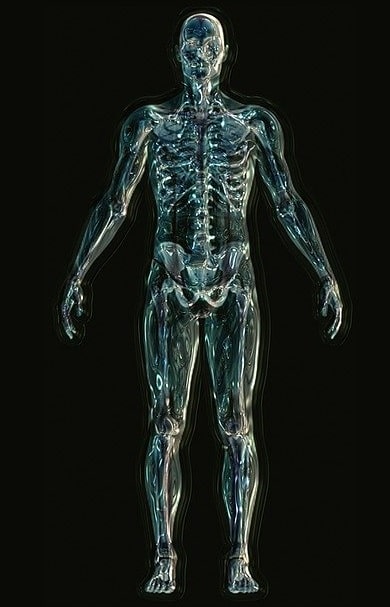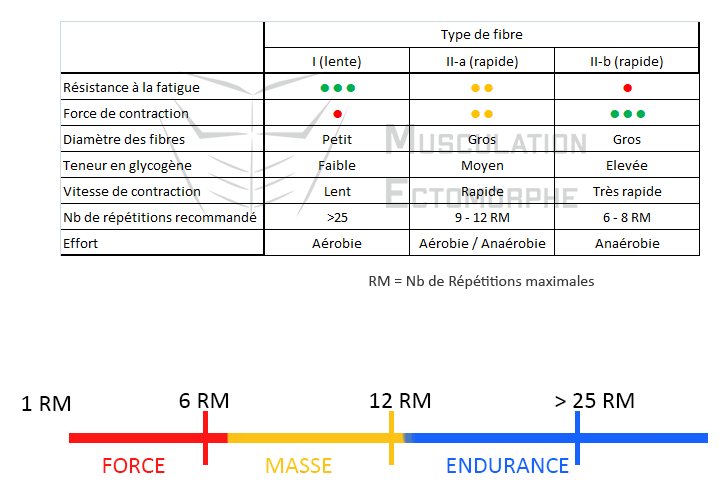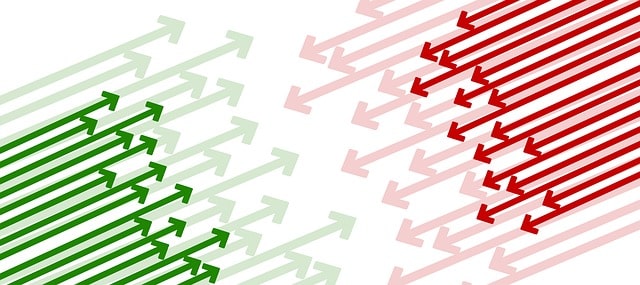If you are looking for a personalized weight training program , it is undoubtedly that you are starting out and as a beginner you have a mountain of questions: Where to start? What exercise? How many repetitions? … I reassure you, no need to train 7 days a week to explode everything in 3 months. The only mistake: Copy a bodybuilding program to the letter and cross your fingers to get results.

I have good news and bad news. The bad news is that the perfect bodybuilding program and miracle exercises does not exist. The good news is that if you’ve been looking to get a workout schedule, it’s because you want to structure your strength training sessions so as not to let things happen and that’s a huge deal. step forward.
Save your energy and follow this guide step by step. You will know how to make your own personalized weight training program .
Here is the summary:
Going for a strength training program to get big results and fast is not the right approach in my opinion. I like to say that weight training is a marathon and indeed, you really have to be very patient if you want big results. Be aware of what you are asking your body to: build muscle ! And training is nothing more or less than a way to “break down fiber” (to rebuild with food and rest, bigger muscle ).
The right approach is to have a personalized program for:
- Avoid injury
- Stay motivated and have fun
- Do productive sessions to progress
- Adapt it according to your strengths / weaknesses
So no need to do the latest trendy exercise. It is not for you to adapt to the program, but rather to the program to adapt to you and to your situation.
On what basis to make a custom program?
Beyond your level, you must first take into account your genetics to build a solid personalized bodybuilding program . We are not all starting from the same point. You will not progress at the same speed and you will not be as receptive as someone else to a given type of training .

Your genetics give you the first clues to answer the following questions:
- Which exercise?
- How many sets / reps?
- And the number of sessions per week?
- How much rest time to take?
- When to change your bodybuilding program?
The art of choosing your exercises according to your morphology
By far the most important part of your weight training program. The morphology is the number 1 pillar for having a square personalized bodybuilding program , efficient and optimized. If your goal is to develop your physique you have this enormous chance to choose the exercises .
Knowing how to train according to your body type means avoiding (or delaying) pathologies and selecting exercises that are effective for you.
You will understand, no need to copy the neighbor. Your levers will not be the same. The length of the limbs, the muscles, everything comes into account. This will have an impact on the stretching tension and contraction of a muscle during exercise but also its development capacity, for example it will be more difficult to make meat on a short calf rather than a long calf.

I’m not hiding from you that it will take a little experience to get to know yourself, but the earlier you do it, the faster you will progress.
This answers the question: Which strength training exercise to choose?
I would like to thank Frédéric Delavier and Michael Gundill, two French authors who were the first to popularize this approach to bodybuilding. Their books have given me so much that I can only recommend them to you, especially the Delavier method of bodybuilding 2 (and 3).
Recovery: determine the number of sessions
The speed of recovery from one session to another varies according to your genetics, your age, your pace and lifestyle … Although too often neglected for fear of “melting” or regressing, recovery is nevertheless l ‘one of the pillars of progress.
By the way, recovery is not just a matter of waiting until you have not been able to have aches, in fact, the muscle does not recover at the same speed as the joints, for example. Let’s see the different recoveries together:
- Energetic: Have fishing for the next session – 1/2 days.
- Muscle: Rebuild and ready to cash again – 1 to 2 days depending on muscle group.
- Hormonal: Limit hormonal disturbances (increase in cortisol…) – 2 days.
- Nervous system: Maintain strength and efficiency – 5 to 10 days depending on the intensity of the session.
- Articular / tendon: Avoid ending up with tendonitis or other pathologies.

Recovery times are approximate, so it’s best to ignore this too much. In short, recovery gives the first clues to determine the number of sessions per week, in order to have a TRUE personalized bodybuilding program and to avoid being counterproductive.
Note that it will be difficult to change mother nature. You will only be able to take care of your lifestyle (food, sleep, rest…).
Knowing your limits will come with time. This may answer the question: How many weight training sessions per week?
Types of muscle fibers: how many repetitions?
Definitely, the body is a complex machine! There are several types of muscle fibers (or myocyte), each of which has a use. To be precise, there are 3:
- Fiber I (slow)
- Fiber II a (fast)
- Fiber II b (fast)
Therefore, muscles will not be composed in the same way from one individual to another, whether it is the type of fiber, but also their number.
This is why we often find in bodybuilding programs a number of repetitions ranging from 8 to 12 to be executed in explosives. This range of reps and the explosiveness of the movement would make it possible to use mostly fiber type II to develop your physique, because they are the most voluminous.
Here is a table to compare the types of muscle fibers:

Determine the repetition ranges of your bodybuilding exercises
Wanting to use this type of fiber in bodybuilding at all costs can slow you down in your progress. Usually we are 50/50 dialed (except the champions, the lucky ones!) But it will be different from muscle to muscle. If I take my example, there is a good chance that my triceps are denser in fiber II while my quadriceps are denser in fiber I. Indeed, I had much better results for my thighs by performing a lot more repetitions (and sets) with a less explosive movement.
I still want to reassure you! The human body is so well designed that it is possible to “change” the fiber I / II ratio just by going to weight training and training intelligently . Anyway, if you are starting out you will not be able to know if you are receptive to such training, it will take you several months / year to know yourself and modify this ratio. You just have to take this into account so as not to imitate the training of a champion.
This may answer the question: How many reps to do?
The nervous system: how many sets, determine rest times and know when to change exercise
The nervous system is the human body’s information highway, sending and receiving messages. It is precisely the somatic nervous system that interests us today, because it is it that allows you to control your muscles .
In other words, if you have a concrete nervous system, you will be strong and powerful, because you will be able to mobilize neurons quickly and in large numbers to activate the maximum of muscle fibers . And yes, strength is in the head and the size of a muscle is not the only factor (of course, big arms will always be stronger than thin ones …).
If I have to use a metaphor, having a lot of muscle mass and a wobbly nervous system is like having a Lamborghini with a Twingo engine. You are in a way “restrained” by your SN.
Wanting to build up a lot of muscle mass Without taking into account your nervous system can be disabling in the long term. Some beginners will have a more efficient basic nervous system than others. This can come not only from your genetics , but also from your sporting past .

Why take an interest in the nervous system to create a personalized weight training program?
Well for 2 reasons:
First, to fix your rest time and the number of repetitions / sets / exercises .
Indeed, there is no point in wanting to do a lot if you can’t take it. Here is yet another reason not to copy the program of an experienced person, because it is a safe bet that you will be content to count your sets and your repetitions without really giving intensity , having, moreover, times of rest not adapted to your capacity of recovery between series. Better 3 intense sets than 5 normal sets.
Second, to know how long to keep your program and when to change your exercise
No! A program does not change every 3 months to “shock the muscle”. Once you have selected an exercise that suits you, you should do it as long as possible (it can be counted in years) to:
- Learn and use the same nervous circuit
- Create new neural connections
- Thicken neural connections
This explains why we take more from session to session when we select a new exercise and that we “feel” to have done a productive job and it is precisely the opposite, it is simply that we were “constrained” by the nervous system, the time it adapts what …
A sharp drop in the number of repetitions from one set to another is a sign of an exhausted nervous system, better stop there and move on to another exercise, you will know the number of sets to do for the next time.
A drop in performance from week to week with a loss of desire to exercise is often indicative of a burnt out nervous circuit, in which case it is time to change exercise (for his bodybuilding program).
Choose a training strategy before doing your personalized bodybuilding program
A bodybuilding program must be personalized to be adapted to its genetics , but also to its rhythm of life. The questions to ask yourself before wanting to write your bodybuilding program are as follows:
- Do I do weight training at home or in the gym?
- What equipment do I have available?
- How much time per day can I spend?
- How many sessions per week can I do?
Indeed, you will unfortunately have to put aside some things, but that does not prevent you from having the most optimized program possible to achieve your goals! As we will see, there are different training strategies , each with their advantages and disadvantages. Let’s see which one to choose in your case.

Full body
The Full Body consists of working the whole body in a single session. This type of training allows you to train 1 to 4 times a week.
At first glance, this ideal air training regimen, as it easily multiplies his training frequency (per week). Although it is often seen as the ” beginner’s program “, it doesn’t have to be, it is very often the opposite.
In which case to choose the full body?
The full body is best if you want to train 1 to 3 times a week , note that a full body session lasts on average 1h30 to 2h. It allows you to have flexibility in organizing your week. Indeed, if you miss a session, you can fit it another day or even miss a workout without worrying about not having worked all of your muscles during the week. Be sure to work the larger muscle groups (thighs, pectorals, back) at the start of the session and change the order of the exercises at each workout for better management of the effort. If you’re clearly low on energy, better wait until the next day. In any case, within each session a minimum day of rest!
Half Body
The Half body consists of working the upper body in one session then the lower body in another. Therefore, it is up to you to choose whether you can train 1h30 to 2h, 2 to 4 times a week.
When to choose the Half Body?
Personally, it’s a way of working that I approve of and still use to this day. As with the Full Body, the Half body also allows you to have a flexible program , according to the schedule of the week. It is therefore easy to put in a missed session or even add a fifth if you want to focus on certain muscles .
The big advantage is the working balance between the upper and lower body. We often find two types of people, those who have more facility to develop the top rather than the bottom (which is my case) and vice versa. The recovery of the thighs between two workouts is quite long, the two sessions can allow you to focus on the quadriceps during one training and the hamstrings the other day, it’s a very efficient and less trying way of doing things than putting everything in the same training.
PPL (Push Pull Legs)
As its name suggests, the PPL groups exercises by movement category:
- Push (pecs, shoulders, triceps)
- Pull-up (Back, biceps)
- Legs (thighs and calves)
In which case to choose the PPL?
In short, if you are limited to 3 bodybuilding sessions per week (1h30), it is preferable. Despite the lack of flexibility compared to full body, Push Pull Legs allows you to manage your energy (and your nervous system) much better, thus making sessions more productive. As with the Half Body, it is easy to add a workout to emphasize certain muscle groups, such as your weak points .
Split
The best way to have a most personalized program possible . Split (which means “divided”) generally allows you to organize your workouts in order to focus on one or two muscle groups per session.
When to choose Split?
As I said before, this is “usually” how it is done. At least from what I can see, a lot of people use Split to “flatten” and “club” a muscle to the last fiber. Divide to divide, without considering its goals, strengths and weaknesses reap the benefits of this strategy. Some days you can work 3 muscle groups, others just one. Some muscles will be worked only once a week, others several … The number of sets and exercises can be adjusted according to the mood of the day. So it’s up to you to manage, according to:
- your strengths / weaknesses,
- your recovery capacity
- your available time.
Therefore, the Split is right for you if you want the personalized weight training program as square as possible . Of course, you will need a little experience, to make some adjustments over the weeks. However, it’s up to you if you can train more than 4 days a week.
Build your personalized body-building program in 3 steps
Now that you have the basics of your bodybuilding routine, it’s time to complete it! It’s hard to know in advance what you can do, especially if you are a beginner . To start a personalized weight training program as quickly as possible, you have to go step by step.
Step 1: Test the exercises (2 weeks)
As we could see in the previous chapter, the exercises must be (above all) selected in relation to its morphology. However, it is quite difficult as a beginner to analyze yourself and know what to choose
Note that it is much easier to analyze yourself in a photo than in front of a mirror.
I recommend that you do the “tourist” for two weeks, to test exercises . To do this, plan 3 days a week, with a Full Body as a training base to be able to test six exercises per muscle at the end of the 14 days. The idea is to select only one exercise per muscle group , preferably polyarticular .
Finally, just take stock to find out which ones are right for you (or not). Your choice will be on exercises which:
- Gives you a good feeling (burning sensation on the targeted muscle …)
- Does not cause you any discomfort or abnormal pain (for example, pain in the front of the shoulder on an incline curl …)
To have a list of exercises (by muscle group) and examples of workouts, I have prepared a file with examples of strength training programs starting in PDF for you.
Strength exercises to avoid
Finally, first avoid polyarticular exercises which are quite technical, where, moreover, morphology plays an important role. We find in particular the 3 exercises performed in powerlifting: the bench press, the squat and the deadlift.
However, if you are limited by the choice of exercises, or if you simply want to perform them out of desire, here are some recommendations to overcome bad morphological predispositions:
- Bench press: If you have a thin rib cage and long arms, you can add thickness to your chest, or simply limit the amplitude, so as not to over-stretch the pecs ( broken parallel).
- Squat: If you have long legs, you can raise your heels with a wedge or weightlifting shoes, to prevent your back from leaning too far forward. In addition, you can also limit the amplitude, usually you have to go up when you feel discomfort, which can also be due to a lack of flexibility of the ankles.
- Deadlift: If you have short arms (and worse, long legs), you can limit range of motion with a squat rack and perform a ‘sumo’ deadlift, using flat-soled shoes is a plus, your back will thank you.
Step 2: Write your final bodybuilding program
Now that you know your routine, you must now determine the number of sets , repetitions and rest times . Of course, the program is not set in stone and must evolve as you progress.
As for the repetitions, you can base yourself on these repetition ranges:
- Chest / back: 8 to 12 repetitions
- Arms / shoulders: 10 to 15 repetitions
- Thighs / calves: 15 to 20 repetitions
- Abs: 25 to 30 repetitions
Regarding the number of series , you must refer to the first chapter (concerning the nervous system), that is to say, stop as soon as your performance drops, while keeping some juice for the rest of the session.
And finally, the rest times. Usually, we often hear rest times ranging from 1 minute 30 to 2 minutes. You can fix your rest times by getting closer to its values at first. You can know when to resume thanks:
- Getting your breath back
- At the end of this localized burning sensation.
As a reminder, one in four failed series still represents 1/4 of shoddy work. Better to focus on the intensity of the exercise rather than the number of repetitions, even if it means doing 17 or 5 rather than 10.
Step 3: Follow your progress and anticipate the change of bodybuilding program
It’s all good, you’re ready to push! More than concentrating under the bars and letting the time do things.
Now that you know where you are going, don’t forget to keep an eye on your progress so you don’t get lost. So you can:
- Preserve your motivation
- Anticipate changes in exercise, program or even training method
In bodybuilding, tracking your progress is more effective than setting goals .
I want to gain 4kg of muscle in a year!
Difficult to predict the future … It answers the question “what” and not the question “how”. The objectives must be set on the very short term (from one training session to another) and not over the long term:
I will try to add 5kg on this exercise!
Why not do one more set?
What if I took less time off?
Here is what you can act on.
Use indicators of progress
Long term, you have to use indicators to track your progress and there are a ton of them! The idea is not to calculate everything down to the millimeter, but to keep the ones that we think are consistent and easy to follow. Here are a few:
- Body weight
- Fat (comparison in photo)
- Load used
- Number of repetitions
- Number of sets
- Rest time
- Measurements…
It’s something that takes seconds, seconds that will save you months or even years of results for the less organized.
Obviously, you don’t have to look every day to see the slightest sign of progress. The right way is to take stock either monthly or quarterly, this is ideal for seeing noticeable changes and anticipating if something goes wrong. (For example: photos, measurements and weighing every month + note taking at each training).
The progress indicators that I use
Personally, I am still closely monitoring my progress and from experience not doing it is a disaster:
- Loss of motivation
- Stagnation see regression
It becomes a vicious circle… The loss of motivation will make you regress and the regression will make you lose even more motivation.
I use a lot of indicators to follow my progress, the most important:
- Workloads
- The measurements
- My body weight / fat ratio
Here is an example of progress tracking for my thighs, I took the two biggest exercises:
How do I interpret the results?
I have a specific goal in my follow-up:
- Change exercise at the right time: I correlate the loads used and my measurements . If I notice a stagnation or even a regression of the loads used AND the measurements over three months, I change.
- Changing my eating habits: I analyze the body weight / fat ratio. If I put on pounds and too much fat at the same time, I take it easy. On the contrary, my body weight drops, I gasp. In the best case, my body weight increases without gaining fat, I stay in freewheel.
As you can see, my measurements have only increased over a year. It was the same for my performances (Series, rehearsal and workload). It was then unnecessary to change the exercise, only a few corrections to the exercise itself (highlighted in yellow), for a matter of comfort.
After a year my motivation and progress suddenly dropped, so did my measurements (as shown in the graph). I was able to anticipate to change exercises.
There can also be a correlation between an increase in measurements and body weight, which results in muscle gain. Nevertheless, to be taken with a grain of salt, especially on fatty areas.


About the author